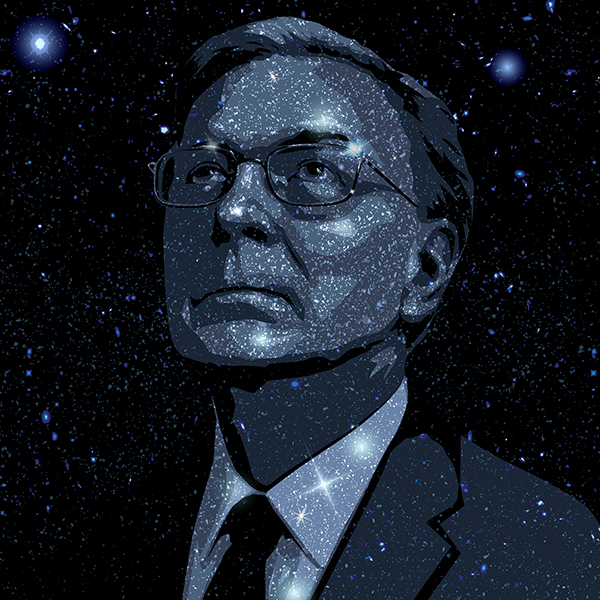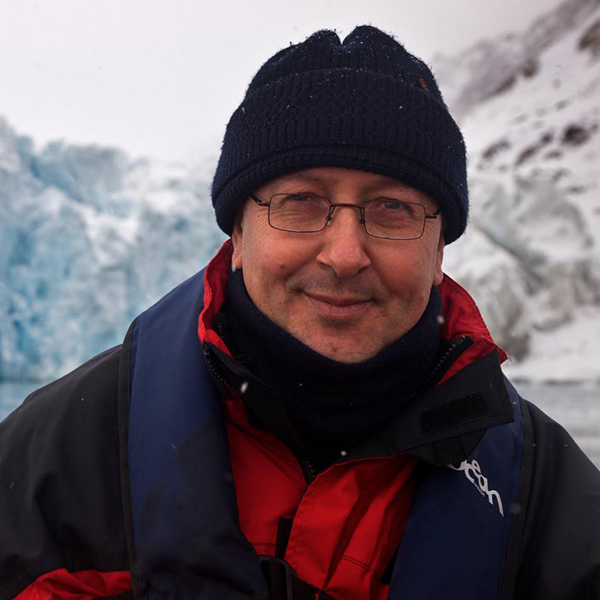If you study black holes, as award-winning McGill astronomer Daryl Haggard does, it’s a heady time to focus on these mysterious cosmic objects.
Nearly six years ago, the first-ever image of a black hole was unveiled, captured by the Event Horizon Telescope Collaboration. Haggard, a world-renowned expert in observational studies of black holes, contributed to the global research effort.
Over the past decade, other momentous black hole discoveries by scientists – including the detection of gravitational waves from merging black holes – have earned top science prizes.
“These discoveries have placed black holes in this very exciting moment, I think, for everyone – for the public, for scientists. A lot of discovery is happening at a very rapid pace,” says Haggard, an associate professor of physics at the Trottier Space Institute.

Enter the Advanced X-ray Imaging Satellite (AXIS). It’s one of two proposals selected last fall by NASA as finalists for the agency’s $1 billion space probe competition. Among their objectives, both AXIS and PRIMA – as the other proposal is known for short – aim to explore the origins of supermassive black holes.
The AXIS mission team now involves some 400 scientists, including Haggard, one of the mission co-investigators and member of the science team. She co-chairs a working group on time-domain and multi-messenger astrophysics – a topic far more dynamic than it might sound to the uninitiated.
“To translate into lay terms, we study the explosive stuff of the universe,” she says, such as supernovae (an exploding star), kilonovae (when two neutron stars merge and explode) and tidal disruption events (when a supermassive black hole shreds apart a star).
Transient events often get very bright very quickly and appear in unexpected places, making it challenging for a space telescope to respond, notes Haggard. “So, you have to design the observatory to have that kind of responsive algorithm.
“That’s a lot of the work that I’ve done with this working group: OK, we’ve got this really cool explosive science case that we want to pursue, how do we design the observatory to be able to tackle that.”
These discoveries have placed black holes in this very exciting moment, I think, for everyone – for the public, for scientists. A lot of discovery is happening at a very rapid pace.”
Associate professor of physics Daryl Haggard
The James Webb Space Telescope, launched in 2021, “is doing a really great job of looking very deep, very early in the universe, and finding way more growing black holes than we ever thought could be there,” says Haggard. But it’s difficult to validate that they are black holes until you see the X-ray emission from them, she adds.
“X-rays telescopes are great for looking for black holes just in general, and the AXIS mission is going to bring us much more ability to look deep into the universe.”
The current state-of-the-art X-ray mission in space is the Chandra X-ray Observatory. While it still captures amazing data, Haggard notes it’s difficult for the long, heavy telescope to move quickly and respond to transient events in space.
“AXIS is going to be so much more agile than Chandra at being able to zoom around the sky and looking at supernovae, at kilonovae,” Haggard says.
NASA awarded AXIS and PRIMA (Probe far-Infrared Mission for Astrophysics), $5 million each for a 12-month mission concept study. The agency plans to choose one concept in 2026 with a launch forecasted for 2032.
Haggard is a member of the Canadian science team for both proposed missions but isn’t as deeply involved in the PRIMA project.
“As a scientist, to some extent at this point, our job is done. We have impressed upon the review committee that the science cases are really exciting, and that’s true for both of these missions. And now it’s the technologists who are in there trying to demonstrate feasibility,” she says.
Haggard has received several awards for her work, including an Arthur B. McDonald Fellowship from the Natural Sciences and Engineering Research Council of Canada and the Rutherford Memorial Medal in Physics from the Royal Society of Canada. She grew up in northern New Mexico, where dark skies make for prime viewing of stars and the Milky Way Galaxy.
As an undergraduate student in philosophy and classics at St. John’s College in its Great Books program, she read Newton’s Principia and recalls a professor telling the class about sling-shotting spacecraft off gravitational fields of planets to give them a gravitational assist.
“NASA does this routinely, and they sort of whip these spacecraft all around the solar system bodies to give them additional acceleration out into the outer solar system. And I thought that was so cool,” Haggard laughs. It was one of the things that got her thinking about astrophysics as an academic pursuit.
Haggard has a knack for explaining the complex in uncomplicated terms – a helpful trait for communicating science about black holes, which possess so much gravity that not even light can escape from them. Contrary to what many think, they don’t have suction.
“They are not cosmic vacuum cleaners. They don’t go rogue around the galaxy and gobble things up,” Haggard likes to tell her audiences, using her favourite “black holes don’t suck” refrain.
“The public loves astronomy. We are absolutely blessed,” Haggard says. “It is a rare day that I tell somebody I’m an astronomer and they aren’t like oh cool, what about…Jupiter or Pluto…People read astronomy news and that makes your life as a scientist just so much more fun and engaging because people think it’s really neat.”


